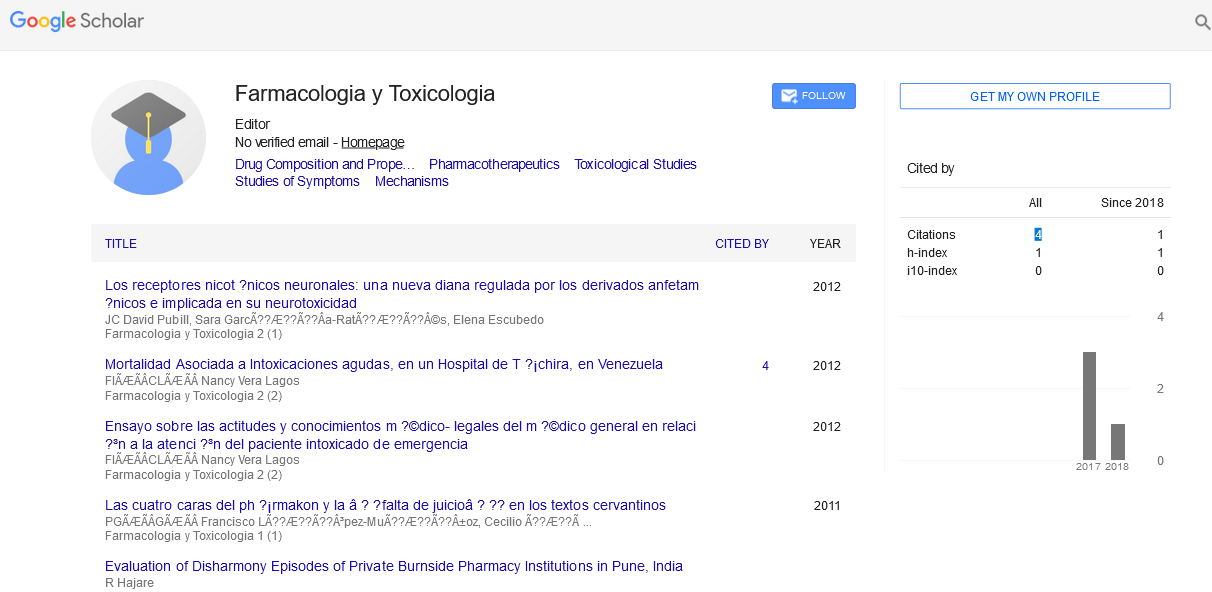Perspective - (2024) Volume 14, Issue 4
Mutagenicity: Causes, Effects and Implications
Claude Collet*
Department of Pharmacology, University of Nusanbagh, Tangerang, Indonesia
*Correspondence:
Claude Collet, Department of Pharmacology, University of Nusanbagh, Tangerang,
Indonesia,
Email:
Received: 02-Jul-2024, Manuscript No. IPFT-24-14970;
Editor assigned: 05-Jul-2024, Pre QC No. IPFT-24-14970 (PQ);
Reviewed: 19-Jul-2024, QC No. IPFT-24-14970;
Revised: 01-Aug-2024, Manuscript No. IPFT-24-14970 (R);
Published:
29-Aug-2024
Introduction
Mutagenicity, the ability of certain substances to induce
genetic mutations, stands as a pivotal concept in both biology
and public health. These mutations, alterations in the DNA
sequence, can have profound implications ranging from benign
changes to severe genetic disorders or even cancer. In this
article, we delve into the intricate world of mutagenicity,
exploring its causes, effects and broader implications for human
health and the environment.
Description
Mutagenicity
Mutagenicity refers to the capacity of physical, chemical or
biological agents to cause permanent changes in the genetic
material of living organisms. These changes, known as
mutations, can occur spontaneously or be induced by external
factors. Mutagens can target DNA directly, causing alterations in
nucleotide sequences or indirectly, by interfering with cellular
processes that maintain genetic integrity.
Causes of mutagenicity
Chemical mutagens: Chemical substances such as certain
pesticides, industrial chemicals and even components of tobacco
smoke are known mutagens. These chemicals can react with
DNA, forming adducts or altering bases, leading to replication
errors and mutations.
Physical mutagens: Physical agents like Ultraviolet (UV)
radiation and ionizing radiation (e.g., X-rays, gamma rays) can
directly damage DNA. UV radiation induces the formation of
thymine dimers, while ionizing radiation generates free radicals
that can break DNA strands or alter bases.
Biological mutagens: Some viruses and bacteria possess
mutagenic properties. Viruses, for instance, can integrate their
DNA into host genomes, disrupting normal cellular functions and
potentially causing mutations. Bacteria may produce toxins that
interfere with DNA replication or repair mechanisms.
Effects of mutagenicity
Mutagenic events can have diverse consequences depending on
the type of mutation and the affected genes. These effects include:
Point mutations: Single base pair changes can lead to altered
protein function or expression levels. This can disrupt normal
cellular processes and potentially contribute to disease
development.
Insertions and deletions: Adding or removing nucleotide
sequences can shift the reading frame during translation,
resulting in non-functional or aberrant proteins.
Chromosomal rearrangements: Large-scale mutations, such
as translocations or inversions, can disrupt gene regulation or
create fusion proteins, which are associated with various cancers
and genetic disorders.
Mutagenesis in germ cells: Mutations occurring in sperm or
egg cells can be passed on to offspring, potentially leading to
inherited genetic disorders or increased cancer risk in future
generations.
Mechanisms of mutagenesis
Mutagens exert their effects through various mechanisms,
primarily targeting DNA:
DNA damage: Mutagens can directly damage DNA by causing
breaks in the strands or altering the bases' chemical structure.
DNA replication errors: During DNA replication, mutagens can
lead to errors in base pairing, resulting in mismatches or
insertions/deletions.
Indirect mechanisms: Some mutagens may not directly
interact with DNA but instead affect cellular processes that
indirectly lead to mutations.
Detecting mutagenicity
Detecting mutagenicity involves several laboratory assays
designed to assess a substance's ability to induce mutations.
These tests include:
Ames test: A widely used bacterial assay that detects
mutagenic substances by observing their ability to cause
mutations in Salmonella bacteria.
Micronucleus test: Used in mammalian cells, this test
identifies mutagens by measuring the formation of micronuclei,
which are small fragments of chromosomes formed during cell
division.
Comet assay: This assay detects DNA damage and strand
breaks in individual cells, providing insight into a substance's
genotoxic potential.
Implications for human health
The implications of mutagenicity for human health are
significant:
Carcinogenesis: Mutagens are closely linked to cancer
development. Many carcinogens are mutagenic and mutations
in critical genes can promote uncontrolled cell growth and
tumor formation.
Reproductive health: Mutagens affecting germ cells can result
in heritable mutations, passing genetic changes to offspring.
Environmental impact: Mutagenic agents in the environment,
such as pollutants and industrial chemicals, pose risks to
ecosystems and biodiversity.
Implications for human health and the environment
The implications of mutagenicity extend beyond individual
health to encompass broader environmental and societal
concerns:
Cancer risk: Many known carcinogens are also mutagens.
Exposure to mutagenic substances, especially over extended
periods, can increase the risk of developing cancer by promoting
the accumulation of genetic mutations.
Environmental impact: Mutagenic agents released into the
environment through industrial processes, agriculture or waste
disposal can affect ecosystems and biodiversity. They may alter
genetic diversity within populations and contribute to ecological
imbalances.
Regulatory and preventive measures: Recognizing the risks
associated with mutagens has led to regulatory frameworks
aimed at limiting exposure. Occupational safety guidelines,
environmental regulations and public health policies play crucial
roles in mitigating risks and promoting safer practices.
Conclusion
Mutagenicity represents a fundamental aspect of genetic
biology with profound implications for human health and the
environment. Understanding the causes and effects of
mutagenic agents is essential for developing strategies to
minimize risks and protect both current and future generations.
By employing rigorous research, regulation and public
awareness, we can strive towards a safer and healthier world,
mitigating the adverse impacts of mutagenicity on biological
systems and society at large.
Citation: Collet C (2024) Mutagenicity: Causes, Effects and Implications. Farmacologia Toxicologia, Vol.14 No.4: 033





